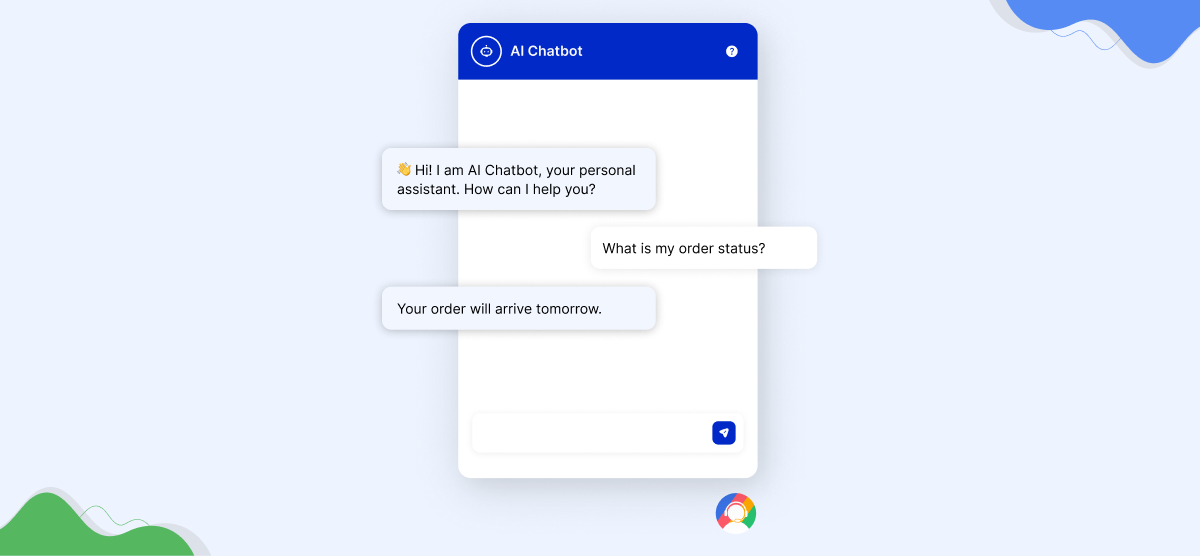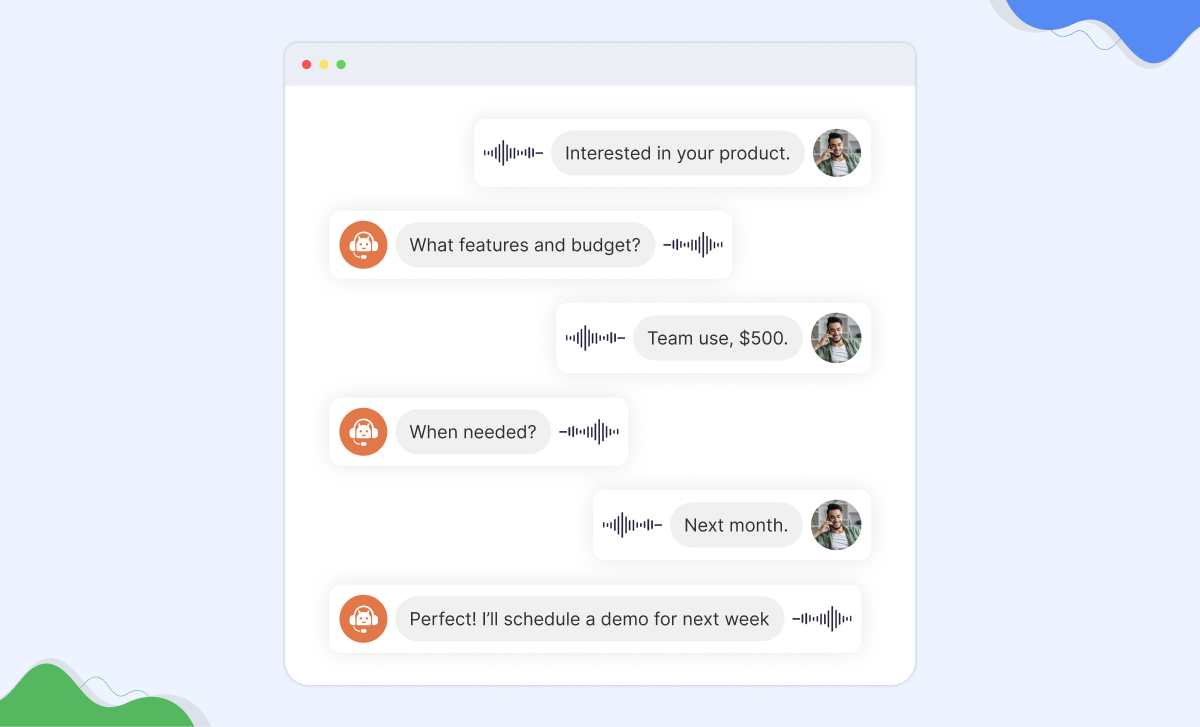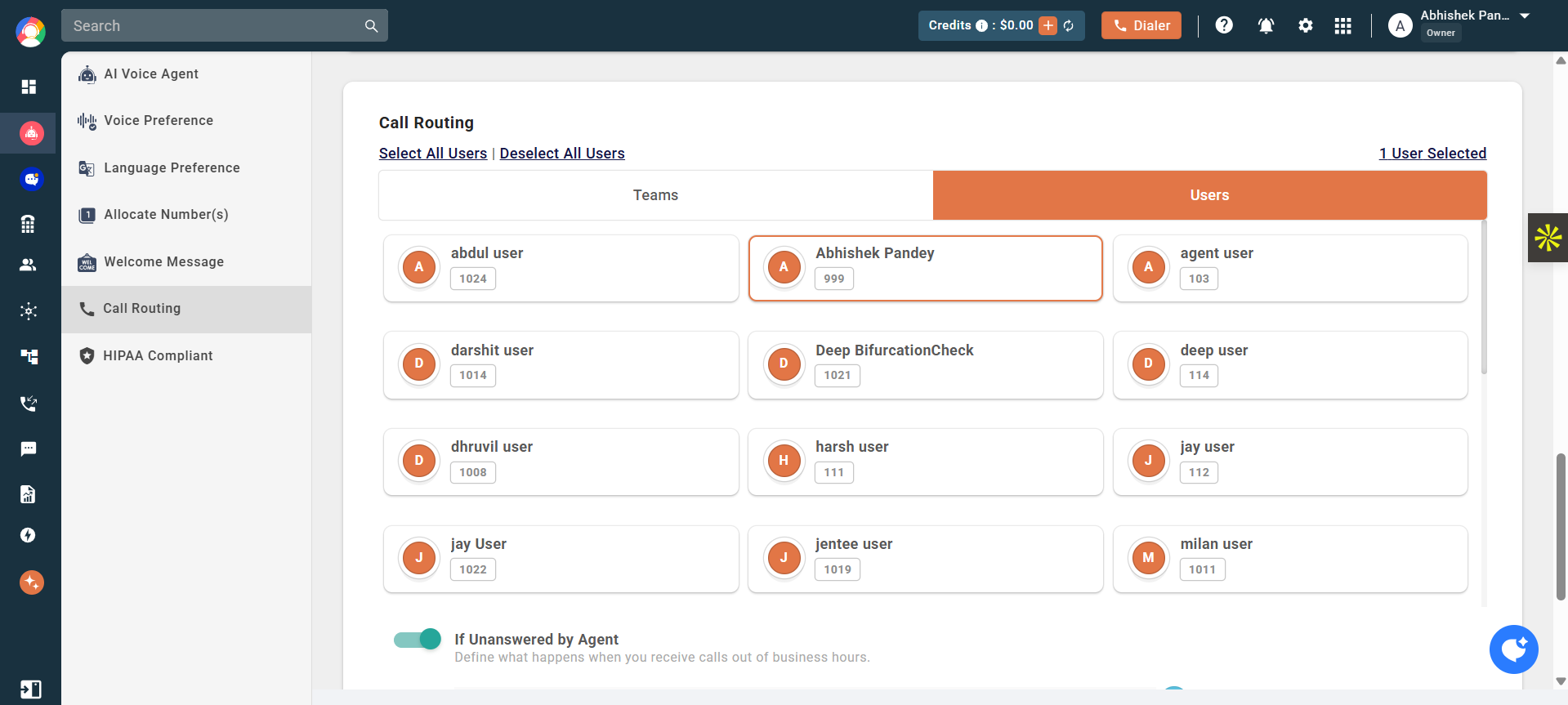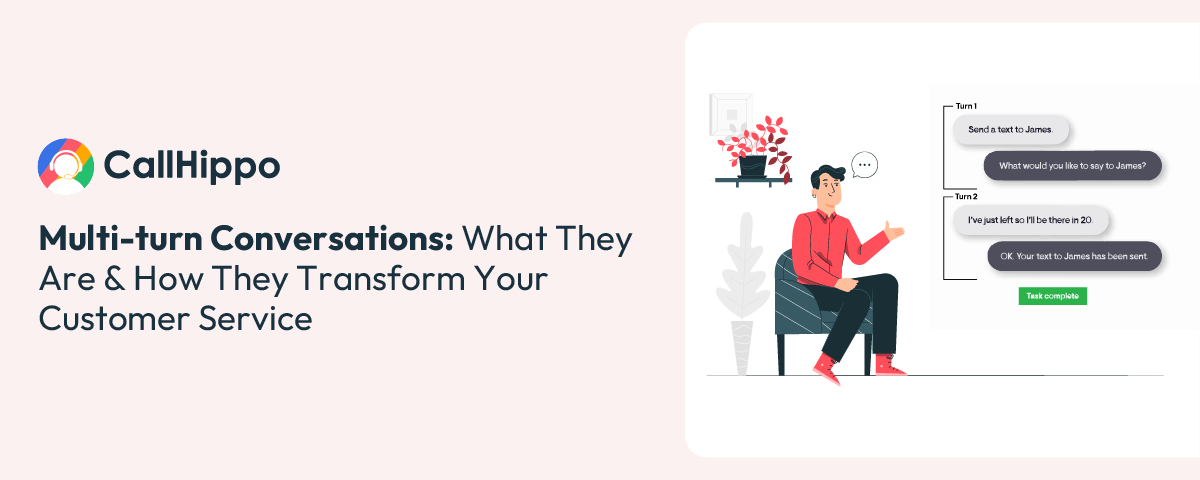Have you ever repeated yourself on a call to a customer service bot and still got the wrong answer? This issue is common. Almost 69% of consumers say that they get frustrated when they need to explain a certain issue more than once.
That is exactly where multi-turn conversations step in. This is not like a one-off reply. These conversations maintain context from earlier messages to respond naturally.
Let’s discuss this concept further in this blog.
Make sure your AI always uses the latest information from your knowledge base. Update it regularly to ensure that the AI provides answers that are not only relevant but also accurate and complete. This way, the customers always get the right information.
What Are Multi-turn Conversations?
Multi-turn conversations are back-and-forth interactions where the system remembers what the user said earlier to give accurate and more relevant responses.
A conversation, even with a human, requires a certain flow to continue. You ask something, they respond, you add details, they answer again. This way, the flow continues. This is a multi-turn conversation. It is not just one question and one answer; it is an ongoing dialogue on call.
Difference Between Single-turn and Multi-turn Conversations
A single-turn conversation is just a one-time question and answer.

That’s it. No memory is recorded of what you said, if you ask something else later. Basically, there is no need to record the context of a conversation.
But, so is not the case with a multi-turn conversation. Here, a dialogue takes place that is built on previous messages.
The example below shows how the context is maintained throughout the conversation.

Here, the system maintains the context throughout the chat. It understands the user’s request and responds naturally, so you don’t have to repeat yourself. On call, these conversations make customer support feel more human because AI remembers the stuff that you have shared already, by understanding natural language.
Why Context is Critical in Multi-turn Conversations?
Think of a customer support agent who keeps forgetting everything you just said. Frustrating right? This is because the context is missing in your conversation.
Context is where the system remembers the user’s questions and messages and understands the flow of the discussion. Without it, every question asked would just feel like starting from scratch.
1. The Role of Conversational Memory
Conversational memory, or conversation history, allows AI systems to store and recall the previous input data throughout the call. This means that when you ask a new question, the system already knows what was discussed earlier.
In customer service, context retention is an essential aspect that businesses should always consider.
2. Challenges Without Context
If the context is not maintained, the conversation would just fall apart. The bot will give you irrelevant answers or ask for repeated information. This breaks the natural flow of communication and defeats the entire purpose of having a conversation.
Let me tell you this through an example:

Even after mentioning “this weekend”, the system fails to remember and asks for additional information. This only makes the process longer and frustrating.
The Importance of Multi-turn Conversations for Customer Service
A great customer service is not just about giving answers to queries. It is about understanding and connecting with the customer. Almost 70% of customers expect anyone they interact with to understand the full context around their issue.
This ability to remember past interactions and maintain context is the key differentiator of conversational AI. Unlike traditional systems, it combines advanced natural language processing, speech recognition and machine learning to enable multi-turn conversations.
When a chatbot or AI voice agent remembers the previous messages, it makes the whole interaction smoother. Customers get faster and more accurate answers without having to explain their issue again and again.
Apparently, handling customer queries is a complex task. How much a conversation stretches also depends on how the user understands the responses. AI, with its ability, adapts to the flow of the conversation without losing track of the context.
And, most importantly, consistency builds trust. Customers notice how the system understands their needs and whether it can handle multiple interactions naturally. When this aspect is taken care of, they feel more confident. And over time, it strengthens customer relationships.
Per User/Month
- Automated Meeting Scheduling
- Transfer Call to Human Agent
- Multilingual Support
- Calendar Booking Assistant

Use Cases of Multi-turn Conversations In Industries
Multi-turn conversations play a role in many industries today. They are not just a tech feature anymore; they serve diverse industries and have real-world applications.
1. Real Estate
To buy or rent a property, there are multiple steps involved. A multi-turn support system can manage these interactions effortlessly.
- A user asks about homes that are available in a particular location.
- The AI provides listings and asks follow-up questions about the budget and size requirements.
- It remembers the previous answers and connects users to the right agent for further assistance.
This makes the property search faster and more personalized.
2. Healthcare
In the healthcare sector, inquiries rarely end in just a single question. Patients may start by asking for the doctor’s availability and later need updates for prescriptions or test results.
- Multi-turn conversations maintain user trust by remembering what the patient has informed about earlier.
- AI Voice agents can guide patients through appointment booking, medical advice, and follow-ups. All this without repeating information.
- This also improves patient care and frees up the staff to handle emergent tasks.
3. Sales & Lead Qualification
In sales conversations, multiple questions and clarifications are involved before a deal gets closed.
- AI can handle lead qualification by asking about needs, budget, and timeline.
- It uses conversation history to avoid repeating questions and smoothly transition to scheduling demos or closing deals.
- Businesses can attend to prospects efficiently and improve conversion rates.

4. EdTech
In education technology, students often ask questions that cover multiple topics.
- A student may want to know about a course, the pricing details, and later ask for guidance regarding enrolment.
- With multi-turn support, the system remembers earlier inputs and provides step-by-step assistance. This makes the learning more interactive and helpful.
5. Ecommerce
In this sector, customers want to know about the pricing details, shipping, returns, and offers, all within a single session.
- Multiple turns can guide them through browsing, purchasing, and post-purchase support.
- The bot remembers what they looked at earlier and can suggest related products or promotions.

Conversations follow a simple business logic, which ensures a natural flow and relevant responses that are based on prior interactions.
How CallHippo AI Voice Agent Enhances Customer Support With Multi-turn Conversations?
CallHippo AI Voice Agent makes customer support faster and more efficient by handling multi-turn conversations with ease. Instead of treating your message as a separate query, the AI remembers previous interactions, which ensures consistent and relevant responses.

Here is how it enhances support:
1. Faster Interactions:
Customers don’t have to repeat themselves. This speeds up the resolution times.
2. Personalized Responses:
The AI adapts to previous responses. The follow-up answers are more personalized.
3. 24/7 Support:
Always available, the AI answering services ensures customers get quick responses at any time.
4. Complete Resolutions:
The AI understands follow-up questions. Your issues get addressed without missing any details.
5. Smooth Integration:
Call Hippo’s AI integrates with your CRM system. This gives your support teams full visibility and control to access customer files.
Conclusion
Multi-turn conversations are the future of customer service. Users expect the resolution in a dialogue conversation where the AI remembers what detail was given to it earlier. CallHippo AI voice Agent creates a seamless and personalized experience that builds trust and improves efficiency. When you have a smarter support system with cutting-edge capabilities, your business can connect with customers in a more meaningful way, every time.
FAQs
What is a single-turn and multi-turn conversation?
A single-turn conversation is like a quick Q&A, where you ask a question, and the system prompt gives a single answer. A multi-turn conversational interaction is an ongoing chat. Here, the system remembers past questions and answers, allowing for a more natural, flowing conversation.
What is a multi-turn conversation LLM?
A multi-turn conversation LLM is a Large Language Model that can handle conversations where multiple exchanges are involved. It remembers the earlier parts of the chat to provide more relevant, context-aware responses.
Why is context important in multi-turn conversations?
Context keeps the conversation flowing naturally. Without it, the system would treat every question as a new one. This forces the user to repeat themselves. When there is context, each response is relevant to what was said before. It makes the entire interaction smoother and more efficient.
How do multi-turn conversations improve customer satisfaction?
Multi-turn conversations remember the previous interactions. This creates a personalized experience for the user. Users don’t have to repeat themselves, and they get a more accurate and timely response. As a result, customer feel heard and valued, which boosts their satisfaction.

Subscribe to our newsletter & never miss our latest news and promotions.









